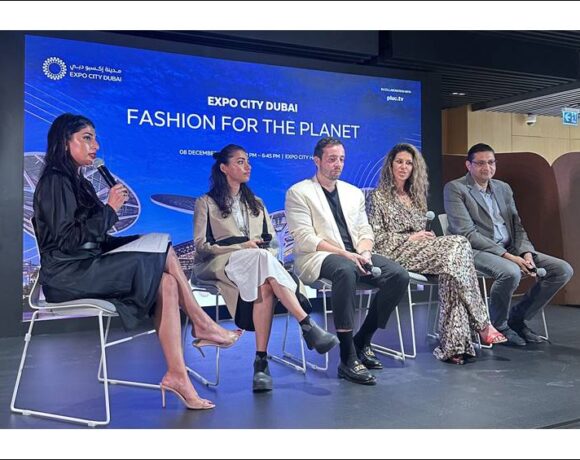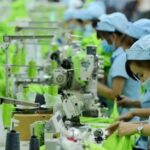Waste Recycling – A Blessing In Disguise!

Waste recycling is going to give a big boost to the textile and apparel industry in India and across the globe. It will trigger multifold growth in this industry, writes Avinash Mayekar.
I would say waste recycling is a blessing in disguise since human beings all over the globe are using textiles as per their whims and fancies, creating a lot more unused textiles with every new season and changing fashion cycle. A lot more than needed textiles are landing as waste into landfills in most of the developed countries. For developing or poor countries, the scenario is slightly different—these drastically changing fashion garments are being used as second-hand/used garments for clothing and thereafter going in as landfill wastes. In countries like India, they are being used as wipes. Ultimately whatever was getting used was going to landfills or getting burnt, thereby harming our environment.
Now with rising awareness and environmental concerns, most of the countries have banned waste going out of their country and are also compelling the sourcing partner countries to adopt a system for collecting textile and apparel waste supplied by them. There are challenges and issues related to the management of this process, especially limitations on used garments going to third world countries, but the World Bank and other global leaders are working on it.
Since the start of global concern on circularity and recycling of fibres, we have to understand that waste needs to be firstly recycled and there needs to be a mandate for the utilization of these fibres in fixed percentages in every textile process going forward. The global production of fibres was 113 mn tonnes in 2021 and the waste generated is 92 million tonnes/year, which is expected to increase to 134 million tonnes by 2030. The waste from pre- and post-consumer recycled textiles in 2021 was less than 1%.
Why waste recycling?
We need to take care of future generations, ozone layer depletion, resources availability, clean air and water availability. All these things would demand the use of recycled fibres in a big way which we have totally ignored in the past and done more damage not by simply ignoring but by using processed fibres (virgin/technical fibres) with various dyes and chemicals.
Waste recycling will be a limiting factor on total waste generated. Also, by using waste recycled fibres, we would limit the production of grey/virgin fibres required for the industry to meet the ever-growing demand of the textile and apparel industry.
Technologies:
- Mechanical recycling line: Includes cutting, blending, opening and baling process.
- Chemical recycling: Includes cutting, melting, extrusion, spinning beams, cutting for getting staple fibres or winding for filament.
Challenges of waste recycling:
Waste recycling is a big challenge, not only because it is difficult to get back the right type of material that is to be used for recycling, but there are many variables like different fibres, colours, chemicals, staple lengths, deniers and physical and chemical properties. So, matching application needs with such variable waste is a major challenge. Segregation of colours is another challenge. For example, mélange yarn with 4% or 5% of dyed fibres gives different shades, so a new variable is added from waste recycling.
International markets pose bigger challenges. Although some countries sell post-consumer waste free of cost at their ports, you need to travel to these ports, collect the containers and bring them back. This involves huge logistical cost which needs to be incorporated and studied techno-economically. So, there are many challenges.
Another challenge is the type and the purpose of technology to be used. We need to adopt technology that avoids fibre rupture. We need to take care of the process by which one can have different types of colours to be processed one after the other. There are technologies produced by European manufacturers and they are successfully taking care of all types of wastes. But the challenges are enormous and those need to be taken care of
Demand for waste recycling:
From my recent interactions with various industry people, I have come to know that there are brands like H&M and other big brands that are strategizing to use around 30% of the recycled fibres in their products so that they can meet global requirements and become the supplier of recycled garments or apparels. So, this is going to be a huge challenge and, at the same time, it presents a good opportunity for people who would be going for waste recycling immediately.
The total virgin fibre production of India is 341.91 lakh bales of cotton production in 2022-23 and man-made fibre production in 2021-22 (Apr.-Jan) was pegged at 1803 million kg.
So even if we talk of 5% of the fibres, the total requirement is going to be very huge and that will take care of whatever additional growth that is happening in the textile and apparel industry.
Investment scenario for Waste Recycling
Fibres from textile waste for generating cotton recycled fibres of 10,125 kgs/day roughly Rs 20 cr with payback in 5 -6 years and for 20,250 manmade recycled fibres of around Rs 19 cr with payback in 2-3 years. Waste recycled fibres from PET bottles of around 20 tonnes/day need a project cost of Rs 50 cr and the payback period is 4-5 years.















